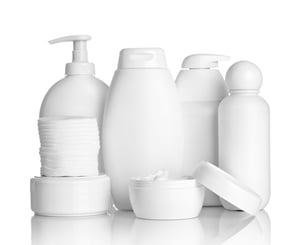 The global cosmetics and personal care industry took a hit during the COVID-19 pandemic, but industry professionals remain optimistic about the future.
The global cosmetics and personal care industry took a hit during the COVID-19 pandemic, but industry professionals remain optimistic about the future.
In 2020, beauty and personal care sales fell, with steep declines in Western Europe and North America, according to recent data from Euromonitor International. As consumers avoided social events and put on masks, they stopped buying as many color cosmetics and fragrances, but they continued to purchase skincare and bath & shower products intended to support hygiene and a sense of self-care.
The beauty and personal care market is expected to rebound as industry players adapt to a "new normal," and e-commerce and digitalization play an increasingly important role. Looking ahead, market research analysts have identified five influential trends that are expected to reshape the beauty market.
1. A Different Perception of Premium
How beauty brands market products to consumers is shifting. Health and ethical claims are the new status symbols, eclipsing an outdated emphasis on vanity and luxury. Categories aligned with wellness trends are expected to profit in the future, as more and more consumers seek to improve their overall wellbeing in many different areas of their lives.
Large big-name cosmetics companies also face stiffening competition from smaller niche players. In addition, sustainable products and features are expected to be even more instrumental in the future.
2. A Shift in Focus to Skincare
The prioritization of health and wellness goals has shifted product sales. Body care has benefited from the healthy living trend, while color cosmetics have increasingly fallen by the wayside. In 2020, skincare beat expectations and is expected to remain a top category in the global beauty industry over the next few years.
3. The Rise of “Geographic Hotspots”
A move toward country-branded beauty has also gained steam, and the “made in” stamp on cosmetics products allows brands to capitalize on their own cultural associations. Globalization and renewed interest in travel and culture helps drive this influential beauty trend.
Korean beauty, also known as “K-beauty,” initially led the way with a 10-step skincare regime, but other unique skincare regimes have also captured consumer's attention in recent years including J-beauty (Japanese beauty, known for a more minimalist approach), C-beauty (Chinese beauty, featuring ingredients and rituals from traditional Chinese medicine), and A-beauty (Australian beauty, with a "less is more" appeal and organic and natural formulations), as described by GlobalData.
4. New Emphasis on the Male Segment
Women account for 90% of beauty and personal care value sales, according to Euromonitor. However, growth in men’s grooming is expected to speed up in the coming years, and cosmetics companies are working to capture this segment by releasing new skincare lines that cater to this demographic.
One marketing approach is to align brands with values related to mental wellbeing, prevention, and self-care—values that have only increased in importance during the global pandemic.
5. The Debate Over Natural and Synthetic Ingredients
Consumers have become engulfed in buzzwords and labels that increasingly polarize natural and synthetic ingredients. Although natural ingredients are often positioned as the healthier, better choice, formulation experts understand that both categories of ingredients are essential for making effective and safe cosmetics and personal care products.
About 24-30% of the personal care and cosmetics ingredients market is made up of natural ingredients, while 70-75% is synthetic, according to a report by Frost & Sullivan. The challenge now is to address the confusion consumers have about different types of ingredients and communicate the unique role both synthetic and natural ingredients play for the efficacy and safety of products.
NEW UPDATE: Please check out our article "5 Top Cosmetics Industry Trends to Watch in 2023 and Beyond" for the latest information.
Where to Learn More
Need more cosmetics industry research? MarketResearch.com provides insightful, data-packed reports on just about every topic you can think of related to the cosmetics industry and personal care industry. We cover every part of the globe and a wide variety of market segments such as feminine hygiene, fragrances, hair care, soap and bath products, sun care, oral care, deodorant, and more.
Scroll through our latest cosmetics industry reports here from leading market research firms like Euromonitor, Mintel, IBISWorld, MarketLine, and Frost & Sullivan. Find expert information on market size, market forecasts, market share, trends, opportunities, challenges, and leading companies.
About the author: Sarah Schmidt is a Managing Editor at MarketResearch.com, a leading provider of global market intelligence products and services.


